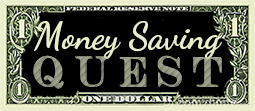Has the price of your medication skyrocketed recently and you can no longer afford it?
Have you skipped doses or skipped filling a prescription because of this?
Are you looking for ways to cut down on prescription costs?
If you answered “yes” to any of the above, this post is for you. Here are 5 tips for saving money on your medications:
![]() Shop Around
Shop Around
The main trick is to shop around (comparison shop) as prices vary widely from store to store. There can be wide variances even in the same areas/regions.
It isn’t 100% clear, but prices can vary for a number of reasons including:
- Product shortages
- Lack of manufacturer competition
Make sure to compare prices at pharmacies in your supermarket, retail stores, online, and via mail order.
For example, Walgreens may charge a different price than Rite Aid for the same exact drug.
If looking online, pharmacy sites like HealthWarehouse.com are a smart choice. Make sure to look out for ones that are accredited by the VIPPS or Vet-VIPPS programs.
Be aware of fake websites, however! It is also not recommended to buy from companies outside the US.
*Bonus Tip*
You can often find discounts for ordering a 30-day or 90-day supply or even a different dosage. 90-day prescriptions reduce how often you need to cover co-pays. Paying cash for a 90-day supply could be cheaper than three co-pays.
*Bonus Tip 2*
GoodRx is a great resource to compare prices + find coupons. It’s like Expedia, Orbitz, or Kayak, but for prescription drugs.
Consider using LowestMed as well.
*Bonus Tip 3*
Many pharmacies have discount programs available. For example, check out the Rite Aid Rx Savings Program.
As generics can cost much less than brand-name drugs, ask your doctor if there’s an effective generic version of the brand-name medication you are taking. Chances are there is one, as it has been shown that 80% of FDA-approved drugs have generic versions.
According to the U.S. Food and Drug Administration, the costs of generics are usually 80% to 85% lower!
Kiplinger notes that because of this, “employers typically offer better coverage for them, too”.
Also, if you’re worried that the brand-name versions have any advantage – by law, there is no significant difference between them. The only difference really is appearance.
![]() Negotiate
Negotiate
You may be able to get a discount if you ask for a better deal. Thus, approach it like you would if you were buying a used car. Ask the pharmacist if there are any discounts, coupons or cheaper alternatives for your prescription.
Independents and other smaller pharmacies will offer more flexibility in matching or beating prices. This is especially true if you pay with cash (gives you an increase in bargaining power).
Pharmacies don’t want to lose your business, so this is one way that they will work with you to keep your business.
![]() Skip Chain Drug Stores
Skip Chain Drug Stores
It is best to check out big wholesalers such as Costco and Sam’s Club (even if you’re not a member), as chain drug stores tend to charge more. Consumer Reports found that shoppers could save more than $100 month by doing so.
Retail chains set high prices to help determine what the insurance companies will pay (so there’s no chance that it could undercut what they get paid by insurers). They make higher profits on uninsured individuals and aren’t as concerned about those who pay out of pocket.
Costco, however, has lower prices by controlling expenses. They have a huge inventory of goods and don’t solely rely on their prescription sales.
“It really comes down to a store’s business model. For example, big box stores tend to use their pharmacies as a way to get consumers through the door with the expectation that they’ll buy other things,” an editor at Consumer Reports noted.
![]() Don’t Always Use Insurance
Don’t Always Use Insurance
In some cases, your out of pocket price may be less than your co-pay price. Don’t always assume using your insurance at the pharmacy is the cheapest option.
Some pharmacies are bound by contracts to bill the claim through the insurance company unless the customer requests otherwise.
Ask for the price of the prescription if you didn’t use your policy’s prescription drug plan. Chain and big-box pharmacies at stores like Rite Aid, Walgreens and Walmart offer hundreds of discount generic drugs for cash-paying customers who aren’t using insurance.
> Want to get $20 off your next prescription co-pay + FREE home delivery?
Check out Phil. Phil is a FREE service that manages your ongoing prescriptions with FREE delivery.
They are currently offering new customers $20 off the insurance copay or medication price of the first shipment of their prescription(s)!
To get started. follow these steps:
- Sign up and add your existing prescriptions to Phil
- Phil then contacts your old pharmacy and does the paperwork for you
- Their partner pharmacies deliver prescriptions to your doorstep every month
For further details, visit their website here.


